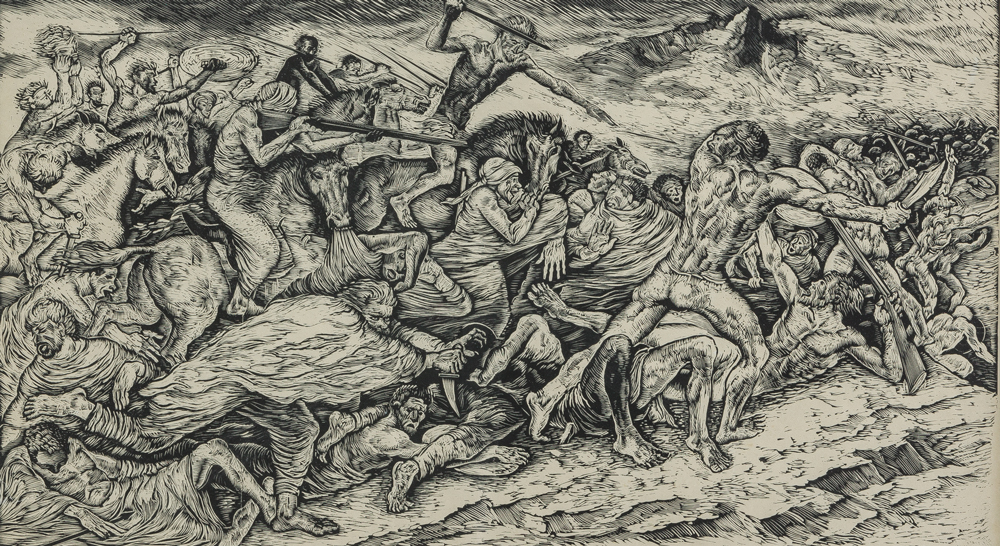Mario Delitala, Cavalleria Galla, 1942, woodcut, Collezione MAN
A burst of figures in motion, immersed in the chaos of battle: drawn bows, arrows slicing through the air, bodies trampled in the fury of the clash. It is a dramatic still image, captured on paper through the technique of woodcut. Observing this engraving, one feels drawn into the scene, able to sense the urgency of the gestures, the tension in the exhausted bodies, the hollowed faces reflecting the relentless horror of conflict.
The graphic line carved into the matrix varies in intensity: it thickens and thins out, creating chiaroscuro effects that give depth to the composition, enhance the dynamism of the figures, and precisely define their expressions.
The author of the engraving is Mario Delitala (Orani, 1887 – Sassari, 1990), one of the most prominent figures of 20th-century Sardinian art. Among his best-known works is La cacciata dell’arrendadore, also housed in the MAN collection and part of the loan from the Municipality of Nuoro. In addition to being a painter, Delitala played a key role in the history of printmaking in Sardinia: as early as 1931, the magazine L’Eroica dedicated a monographic booklet to him, featuring twelve woodcuts.
The central themes of his printmaking, developed mainly between the 1920s and 1940s, are deeply rooted in Sardinian culture: figures, landscapes, and scenes of everyday life that authentically portray the island, its traditions, and its people. His engravings, steeped in realism, draw from tradition while also conveying a modern, powerful vision of reality.
The MAN preserves some of his most important works, including Ballo a Torpè (1930), Mercato paesano (1938), and Madri nel rifugio (1945)—testimonies of an art that, through woodcut, has told the story of Sardinia with a distinctive style, rich in energy, passion, and expressive depth.
Rita Moro

